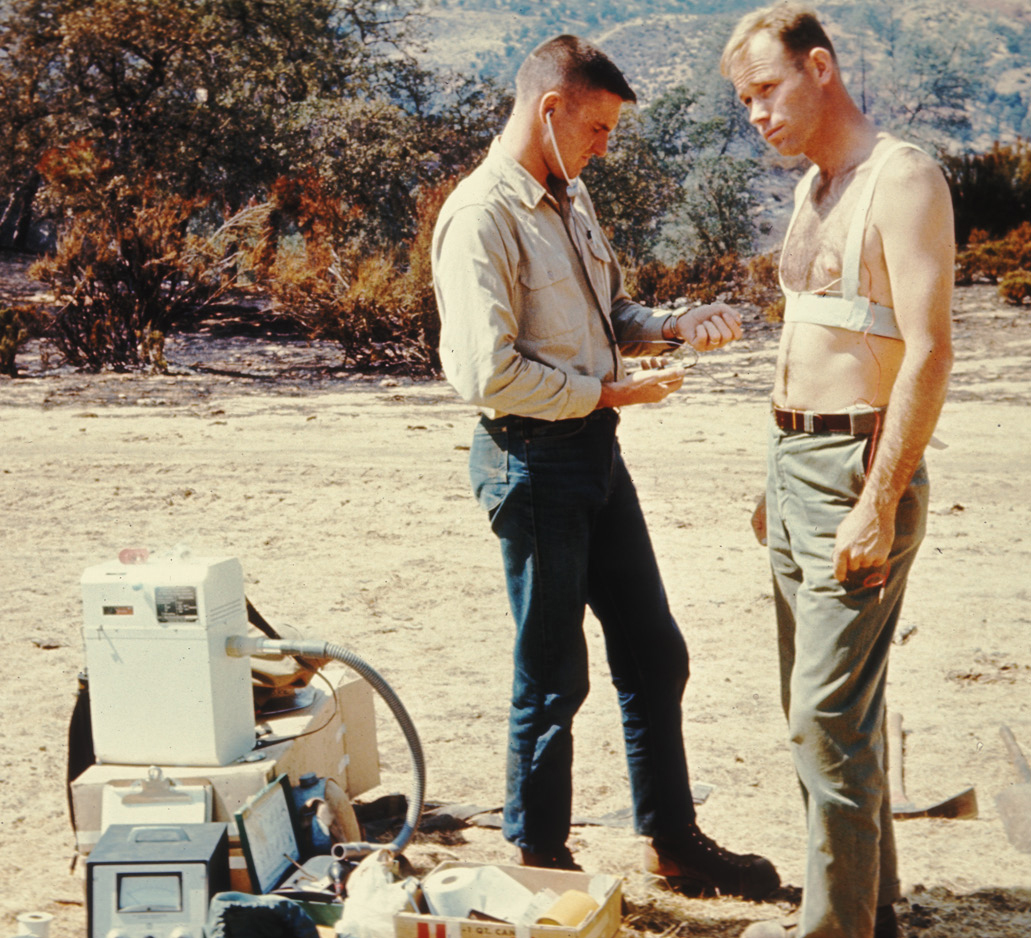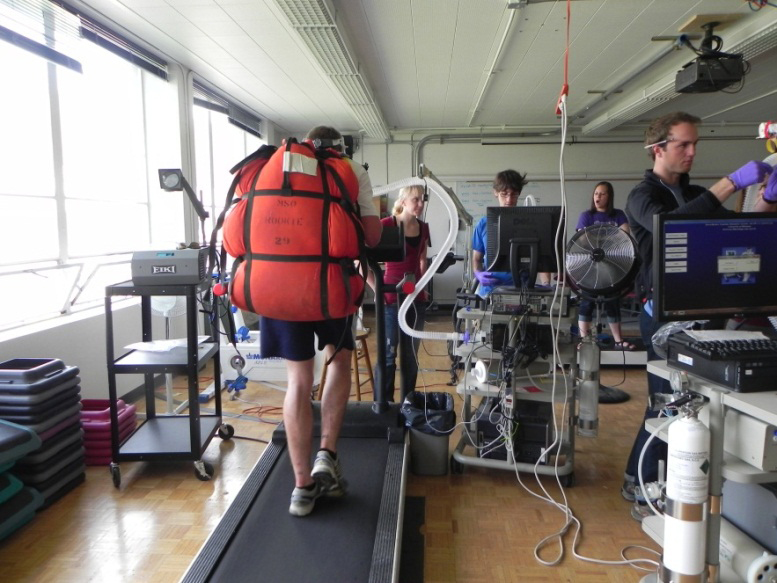- Editorial Offices
- 325 Brantly Hall
- Missoula, MT 59812
- (406) 243-2488
- themontanan@umontana.edu
- Icons By Maria Maldonado



It’s been a long and fruitful half-century for the Missoula Technology and Development Center and the Department of Health and Human Performance at UM. This year marks the fiftieth anniversary of this groundbreaking partnership and the start of what looks to be another fifty years of pioneering research and service performed by the U.S. Forest Service and UM.
In the late 1950s, the Aerial Fire Depot in Missoula began working on equipment for smoke jumping and air cargo. This led to the development of the Missoula Technology and Development Center. Later in the 1960s, recognizing the importance of the interaction between humans and their often life-saving equipment, MTDC set about establishing a working relationship with UM’s HHP department. This union fit seamlessly with the work being done at that time in UM’s Human Performance Laboratory.
Since 1964, the MTDC has maintained a cooperative agreement with UM, which provides cost-effective, evidence-based studies to solve equipment, health, and safety problems for wildland firefighters and other wilderness management and Forest Service professionals. During the ensuing years, researchers at the Human Performance Laboratory, beginning with Brian Sharkey and later including Steve Gaskill, Brent Ruby, Charlie Palmer, Chuck Dumke, Matt Bundle, and other faculty, continue to collaborate closely with the needs of MTDC and the wildland firefighting community. The circle of contributing UM researchers has expanded in recent years and now includes people from several departments.
“The collaboration between MTDC and the University should be the model for how partnerships are completed,” says Joe Domitrovich, physiologist at the MTDC. “This partnership has allowed critical work to be completed that has assisted in scientifically based solutions to the health and safety hazards of not just U.S. wildland firefighters, but wildland firefighters across the world.”
The partnership has continued to grow in strength and size, resulting in many well-recognized and well-established projects, research, grants, and labs. One such lab, run by Ruby, is the Montana Center of Work Physiology and Exercise Metabolism. This high-tech, $1.5 million facility came out of a U.S. Air Force grant but was facilitated through the MTDC partnership and the work being done with wildland firefighters. The center officially was recognized by the Montana Board of Regents in 2007 and continues to work with federal agencies and grants.
“Our research models using wildland firefighters offer an unmatched physiological model that parallels the physical demands of the modern warfighter,” Ruby says. “It is important to me to consistently take our latest findings back to crews and the fire agencies to help assist them in policy change as needed. Wildland firefighters don’t necessarily read our research papers. For this reason, it is important to us to package our research findings into products that they will pay attention to.”
Significant research has come from the groundwork laid by the collaboration. Energy expenditure and fatigue of wildland firefighters, tool design, human-powered equipment carrier efficiency, heat stress, sleep in firecamps, overhead team stress, and other topics have led to increased safety and well-being for the men and women who put their lives at risk to keep our wildlands ecologically sound.
Current projects forged by this partnership include stress and coping in wildland fire dispatchers, fitness testing of wildland fire hotshot crews, development of new fitness standards for smoke jumpers and hotshots, and evaluation of cognitive function and markers of pulmonary and cardiovascular stress following exposure to smoke.
“I am encouraged that the cooperative research agreement started fifty years ago will continue to provide cost-effective, data-based answers to problems associated with wildland firefighting, and that MTDC personnel and UM researchers—and graduate students—will expand research and development activities under what Senator Mike Mansfield once called a unique project,” Sharkey says.